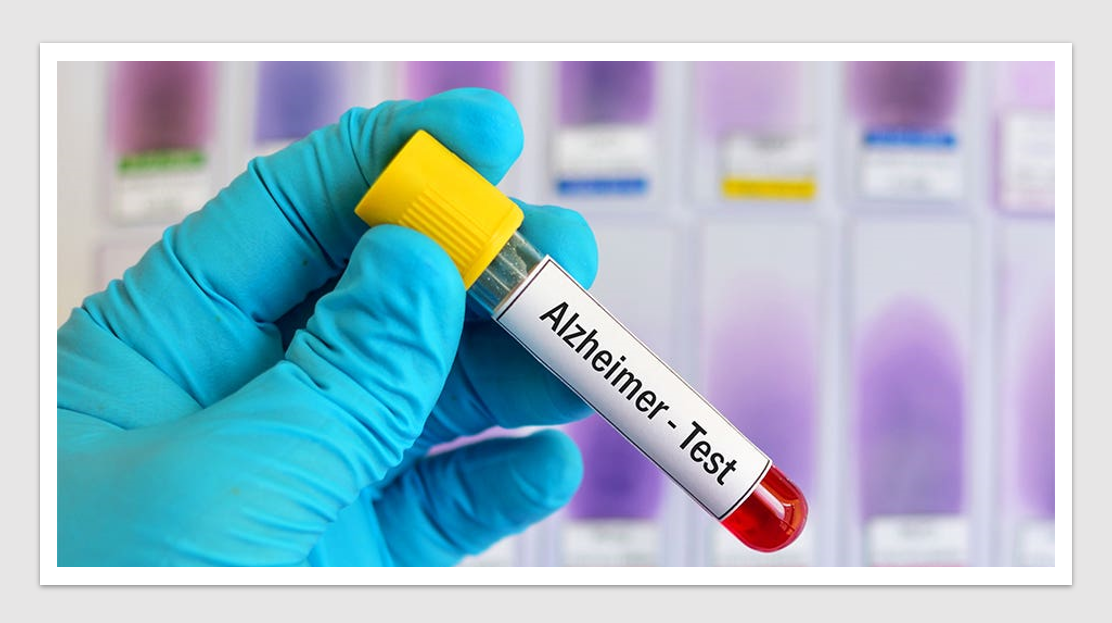News & Trends - MedTech & Diagnostics
Are Alzheimer’s blood tests ready for prime time?

MedTech News: Alzheimer’s disease blood biomarkers (BBMs) may revolutionise the diagnosis of Alzheimer’s in the future, but are not yet ready for widespread use, according to newly-published recommendations by leading international clinicians and researchers convened by the Alzheimer’s Association.
“Blood-based markers show promise for improving, and possibly even redefining, the diagnostic work-up for Alzheimer’s,” said Dr Maria Carrillo, Alzheimer’s Association chief science officer and a co-author of the recommendations.
“Remarkable progress has been made, but additional data are needed before BBMs can be used as a stand-alone test for diagnosis, and before considering broad use in primary care settings.”
The Alzheimer’s Association Appropriate Use Recommendations for Blood Biomarkers in Alzheimer’s Disease by Dr Oskar Hansson et al was published online in Alzheimer’s & Dementia: The Journal of the Alzheimer’s Association and launched at the Alzheimer’s Association International Conference (AAIC) 2022 in San Diego on 1st August.
Carrillo added “In this article, the expert workgroup clearly defines both short- and long-term research priorities needed to fill significant knowledge gaps that still exist, such as how well these blood-based markers work in diverse communities and in those living with multiple health conditions. Also included are consensus appropriate use recommendations for use of BBMs in the clinic and in research trials.”
Two weeks ago Roche Diagnostics announced that the U.S. Food and Drug Administration (FDA) granted Breakthrough Device Designation to the Elecsys Amyloid Plasma Panel, a test that detects and measures Alzheimer’s disease biomarkers in blood plasma to indicate the need for further confirmatory testing for Alzheimer’s disease. Roche is the first in-vitro diagnostics manufacturer to receive this designation for a blood-based biomarker test for Alzheimer’s.
“Blood-based biomarkers for Alzheimer’s are already improving the design of clinical trials, and they are very likely to revolutionise the diagnosis of Alzheimer’s in the future,” said Dr Oskar Hansson, director of the Centre for Neurodegenerative Diseases at Lund University and Skane University Hospital, Malmo, Sweden, and first author on the newly published recommendations.
“That said, the implementation of such markers in trials and practice must be done in a careful and controlled way so as not to accidentally cause more harm than good. Much more research is needed before widespread clinical use of BBMs.”
According to the recommendations, BBMs show “great promise”, especially markers for Alzheimer’s-related brain changes related to nerve cell damage/death and tau and beta amyloid accumulation, for “future use in both clinical practice and trials. However, few prospective studies have investigated the implementation of such BBMs in more heterogeneous populations.”
Not ready for “prime time”
The workgroup points out that no studies have extensively evaluated BBMs for neurodegenerative diseases in primary care and calls for “well-performed BBM studies in diverse primary care populations.” Such studies should also evaluate the impact of BBMs on diagnostic accuracy and change in patient management.
In addition, use of BBMs for general population risk screening and as direct-to-consumer risk tests are not recommended.
The workgroup also says that BBMs should not yet be used as primary endpoints in pivotal treatment trials. However, this does not preclude the use of certain BBMs for decision making in clinical trials with adaptive design, where they could be used to inform decisions on continuing a trial or not.
Many current uses
There are current uses for Alzheimer’s BBMs, according to the workgroup. For example, they “recommend use of BBMs as (pre-)screeners to identify individuals likely to have Alzheimer’s pathological changes for inclusion in trials evaluating disease-modifying therapies, provided Alzheimer’s status is confirmed with positron emission tomography (PET) or cerebrospinal fluid (CSF) testing.”
BBMs can be used as exploratory outcomes in most clinical trials in Alzheimer’s and other neurodegenerative dementias. In non-Alzheimer’s trials, BBMs can be used to identify patients who likely have Alzheimer’s-related brain changes, if that is a condition of exclusion from the study.
“We also recommend cautiously starting use of BBMs in specialized memory clinics as part of the diagnostic work-up of patients already experiencing cognitive symptoms, as long as the results are confirmed whenever possible with CSF or PET, which are the current reference standards,” said Dr Charlotte E. Teunissen, head of the Neurochemistry Laboratory at Amsterdam University Medical Centres, the Netherlands and senior author on the recommendations.
“The implementation of BBMs in primary care will likely take a much longer time because there are very few relevant and high-quality research studies on Alzheimer’s-related BBMs conducted in this setting, but more prospective studies are expected to launch in the coming years,” Teunissen added.
The unmet clinical need
According to the workgroup, about 25-30% of patients with a clinical diagnosis of Alzheimer’s dementia are misdiagnosed when assessed at specialised dementia clinics, and the accuracy of clinical diagnosis is similar or even lower for other dementias, including frontotemporal dementia, dementia with Lewy bodies and vascular dementia. In fact, in most countries, most patients with cognitive or behavioural symptoms are managed in primary care where the misdiagnosis is even higher. The problem is especially acute in the earliest stages of the disease.
“There is a great global need for accurate BBM-based diagnostic and prognostic algorithms that can substantially improve the accuracy of a diagnostic work-up of Alzheimer’s, particularly in the early stages of the disease,” said Dr Reisa Sperling, professor of Neurology at Harvard Medical School and director of the Centre for Alzheimer Research and Treatment at Brigham and Women’s Hospital and Massachusetts General Hospital, and a co-author of the recommendations.
The established CSF and PET measures have excellent diagnostic properties, but are less useful outside very specialised clinics due to limited accessibility, invasiveness (e.g., CSF measures require a lumbar puncture, and PET requires infusion of stable isotopes and exposure to radiation) and high costs. This precludes use of CSF and PET biomarkers in most primary and secondary care settings worldwide.
“A major benefit of the use of blood-based biomarkers is that the collection of blood is less invasive and likely less costly than CSF or neuroimaging markers, and more feasible for primary care practitioners,” said Dr Adam Boxer, Endowed Professor in Memory in Aging at the Weill Institute for Neurosciences, University of California, San Francisco and a co-author of the recommendations.
“This may enable earlier and more equitable referral of individuals to dementia specialists and participation in clinical trials of potential new therapies.”
Establishing the path for BBMs in research
The appropriate use recommendations (AURs) provide specific guidance for current use of and research needed on the four most advanced types of Alzheimer’s plasma biomarkers: plasma amyloid-beta 42/amyloid-beta 40 (Aβ42/Aβ40), phospho-tau (p-tau), neurofilament light (NfL), and glial fibrillary acidic protein (GFAP), as well as potential combinations of markers. For example, the need for:
- Real-world studies on the robustness of plasma Aβ42/Aβ40 as a diagnostic test for cerebral Aβ pathology.
- Head-to-head studies comparing the performance of different forms of p-tau in different clinical contexts and across disease stages.
Most important and enlightening are the recommendations repeated by the authors throughout the AURs or those they say apply across the biomarkers, including:
- Perform prospective studies in primary care settings, including representative and diverse populations with cognitive symptoms. Evaluate the causes of false positives and negatives; the reference standard must be of high quality and preferably include CSF or PET.
- Study whether BBMs outperform what is already available today in primary care, and if they also improve diagnosis and management, including treatment decisions.
- [Gain] better understanding of biological and disease-associated variability and potential impact of medical comorbidities and concomitant medications.
- [Learn whether] certain BBM-based algorithms can be used alone to support an Alzheimer’s diagnosis, or should they only be used as a gatekeeper to CSF/PET.
- Eventually (a) perform head-to-head comparisons of different plasma biomarker assays, and (b) establish the most optimal combinations of easily accessible biomarkers.
The authors conclude that additional data is needed before use of BBMs as stand-alone diagnostic Alzheimer’s disease markers, or before considering use in primary care.
 The Health Industry Hub content is copyright protected and access is provided under individual user licenses. For more information, click here and visit T&Cs here.
The Health Industry Hub content is copyright protected and access is provided under individual user licenses. For more information, click here and visit T&Cs here.
Digital & Innovation

Medical drone to reduce health equity gaps in rural and remote Australia
A specialised medical drone which increases accessibility to essential health services such as pathology, medicines, and telehealth services in rural […]
MoreNews & Trends - Pharmaceuticals

We’ve spent more on healthcare, but it’s been worth it
Healthcare expenditure is surging, with Australia now allocating approximately one-tenth of its budget to this sector. This financial uptick prompts […]
MoreNews & Trends - Pharmaceuticals

New partnership to raise the bar in precision oncology in Queensland
Pharma News: The Australian Translational Genomics Centre (ATGC) is teaming up with non-profit research organisation Omico and the PrOSPeCT program […]
MoreNews & Trends - Biotechnology

AusBiotech appoints new CEO: Former Sanofi corporate affairs and sustainability leader takes the helm
Biotech News: AusBiotech, the nation’s leading industry body for the biotech sector, has named former leader at Sanofi, Rebekah Cassidy, […]
More